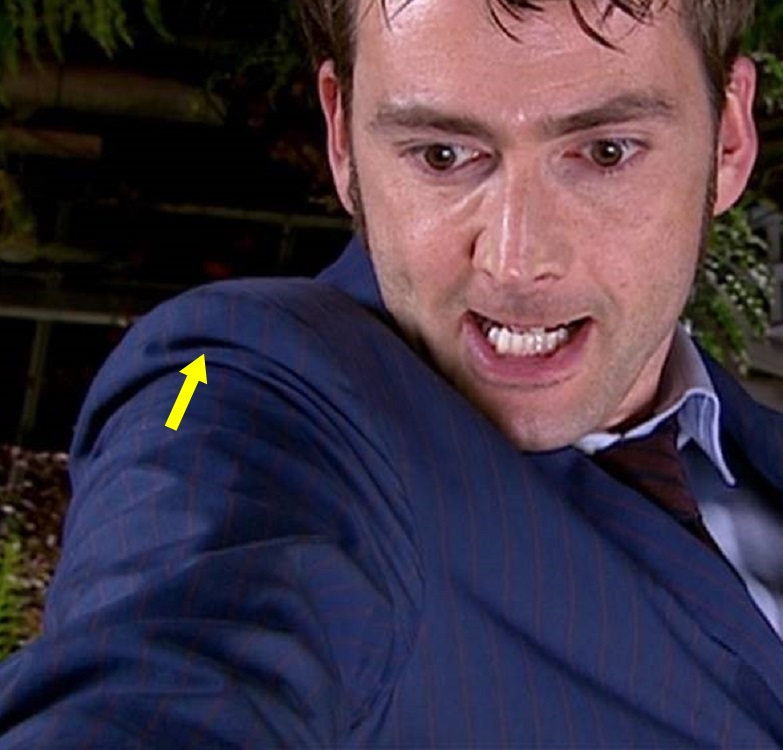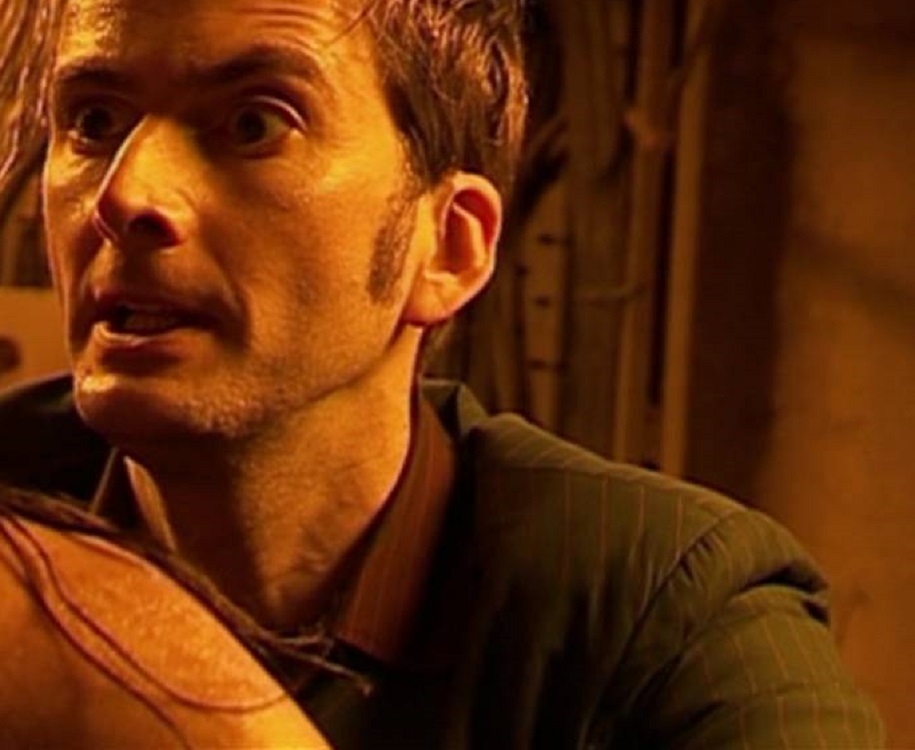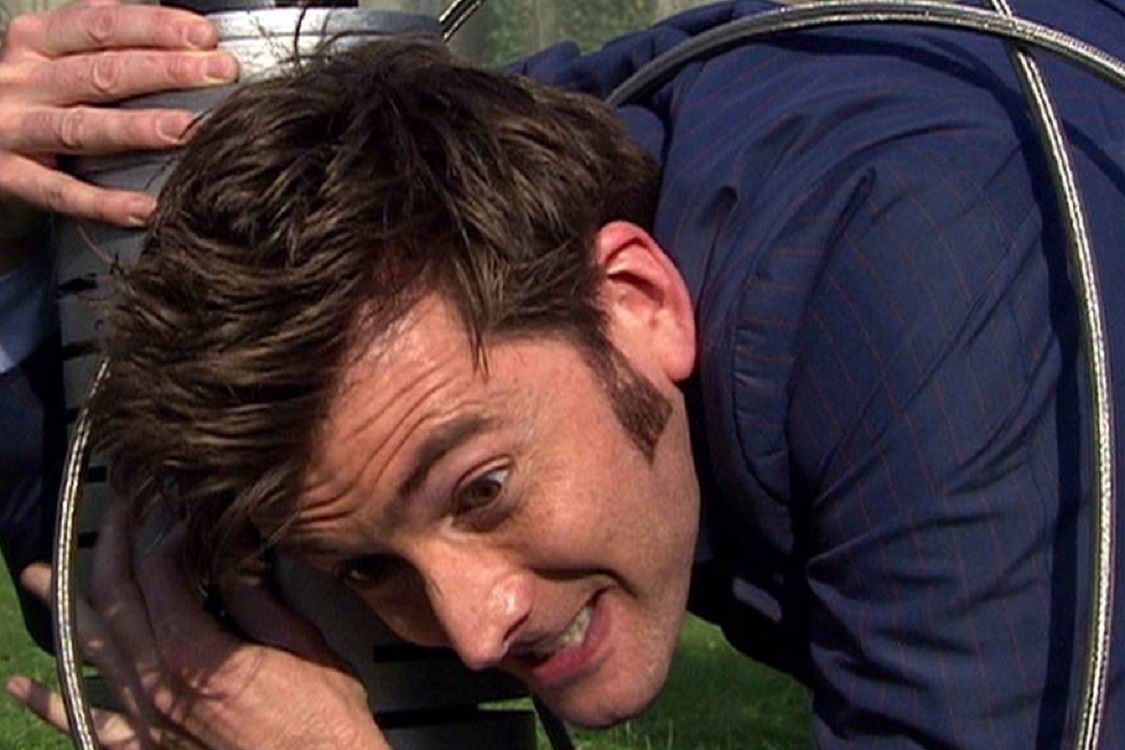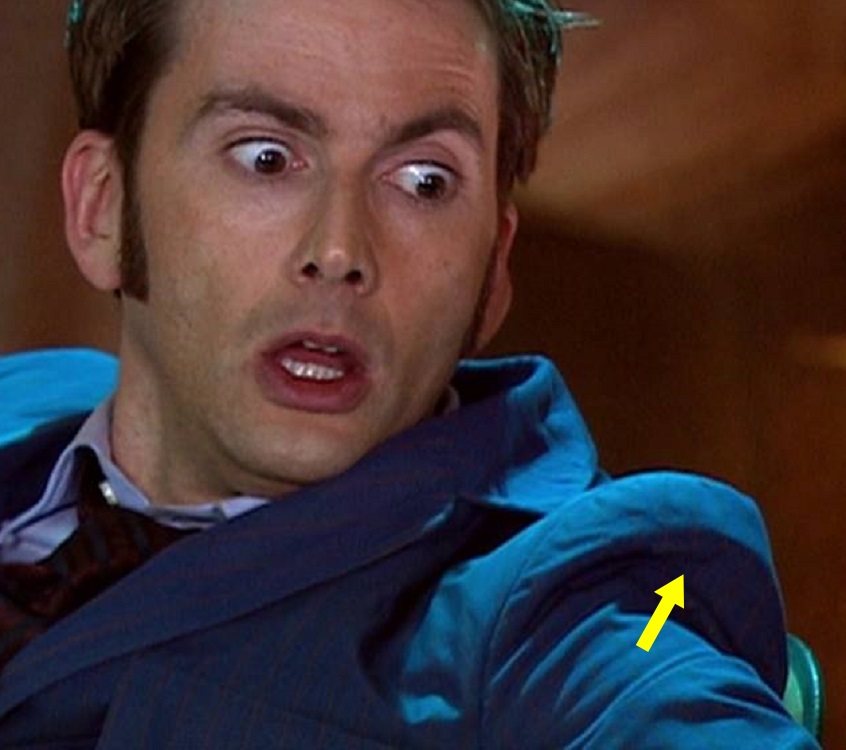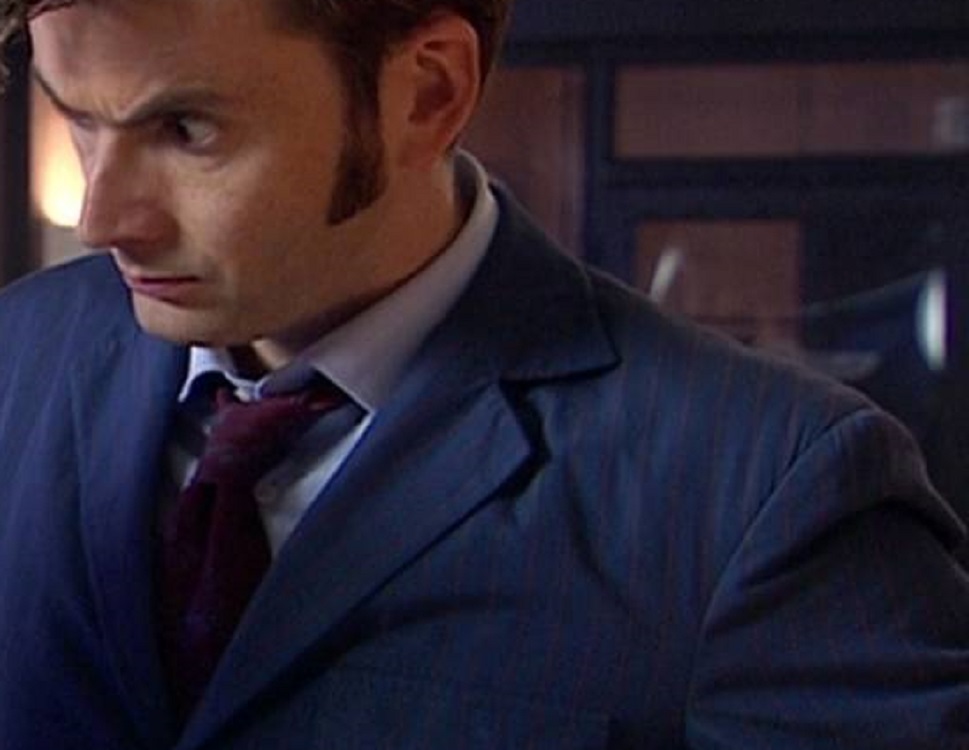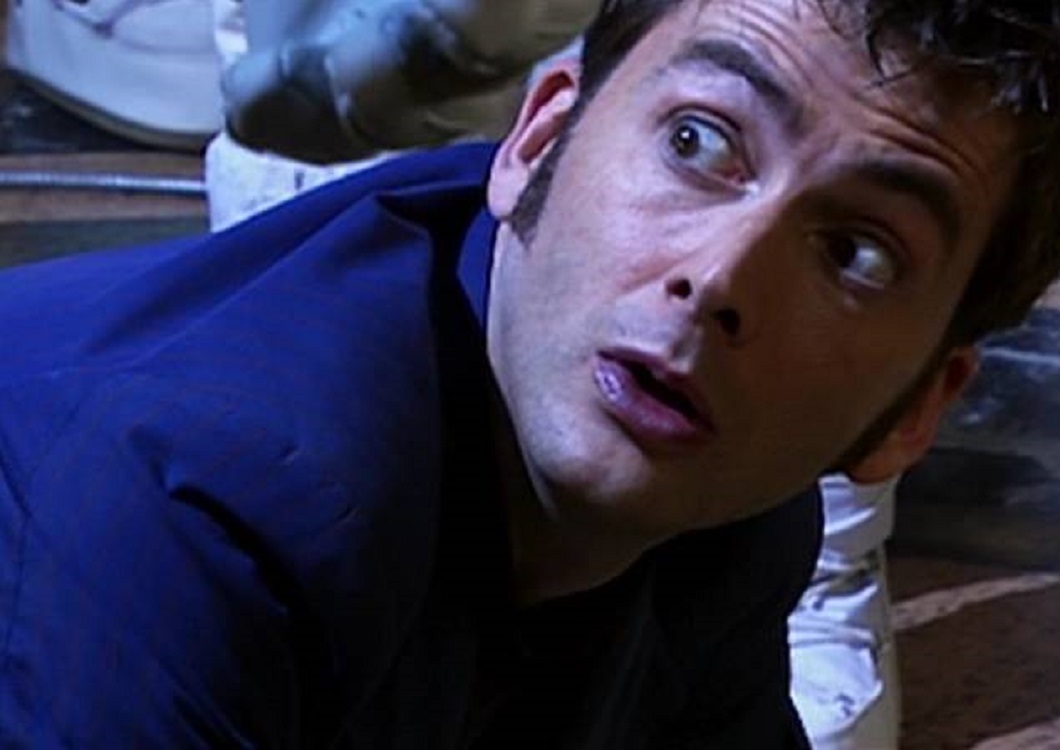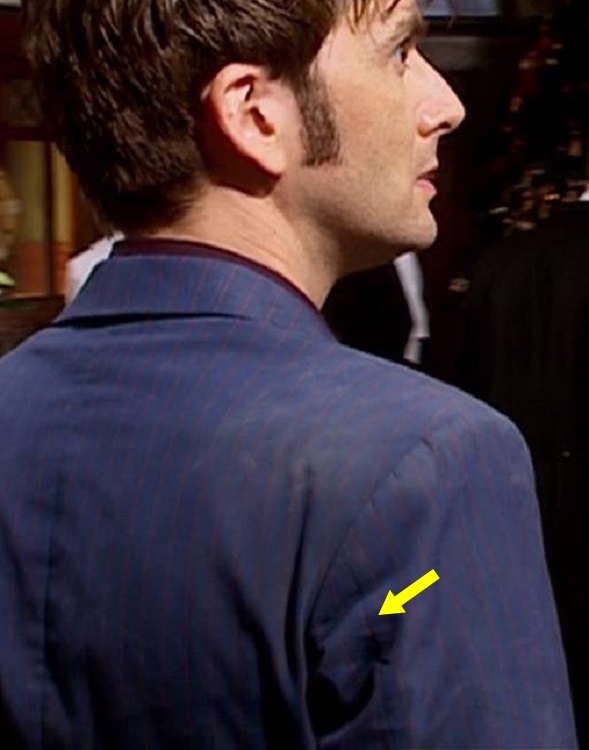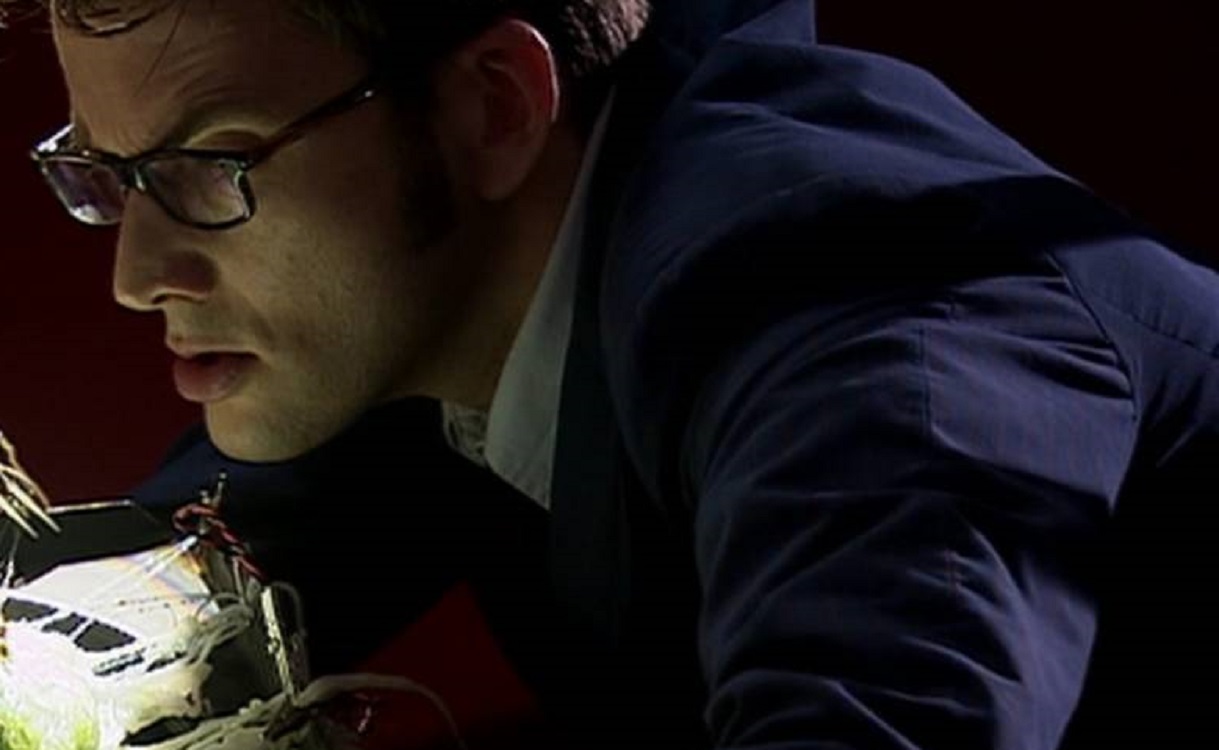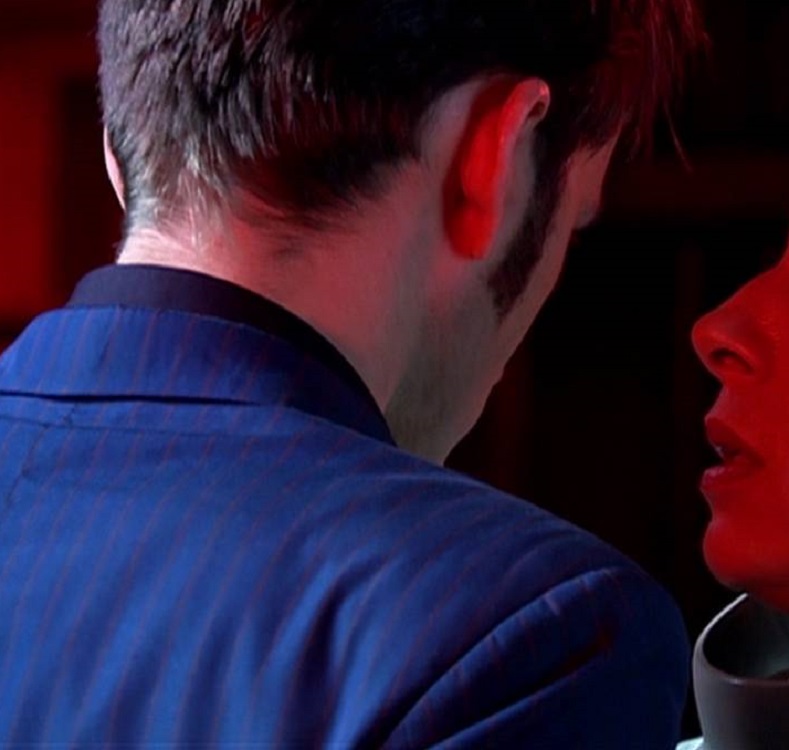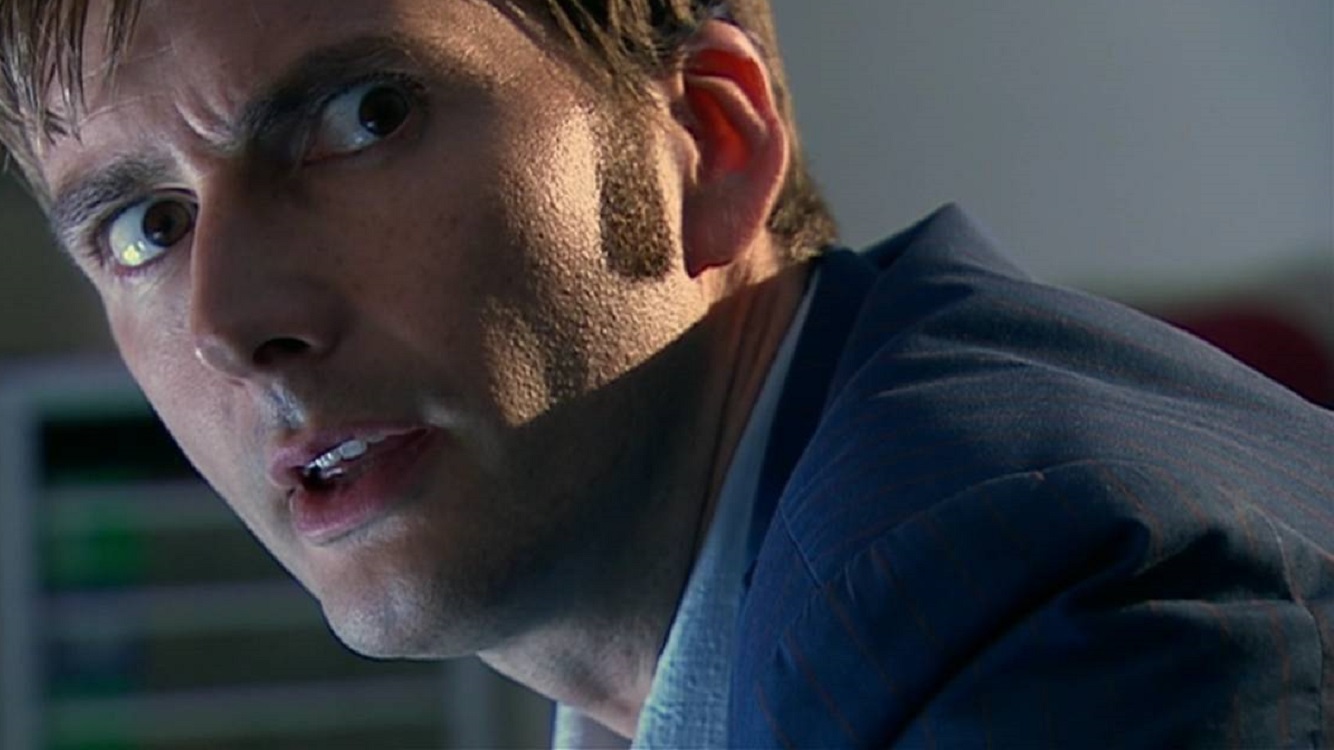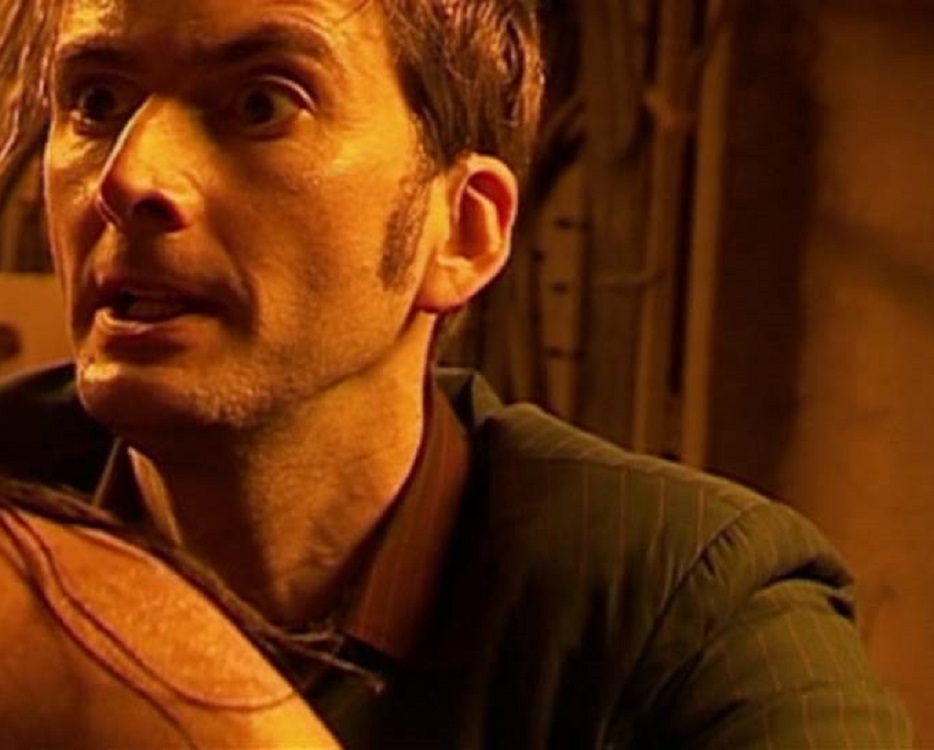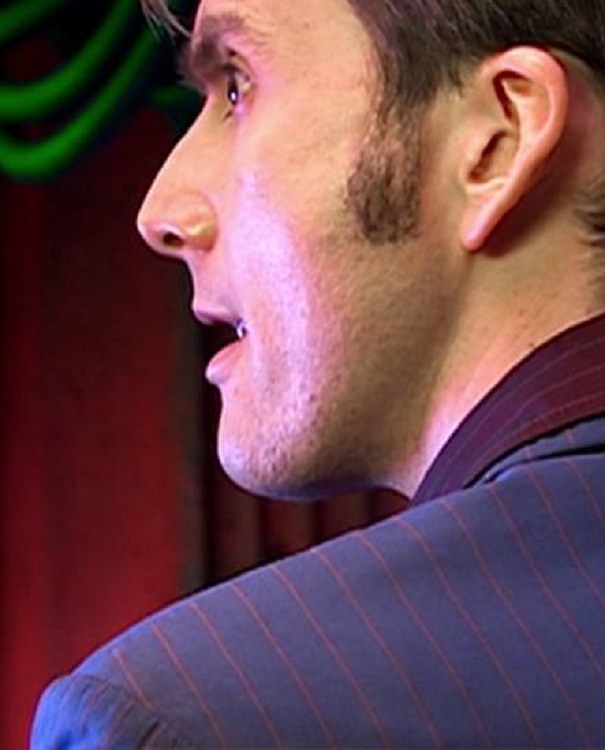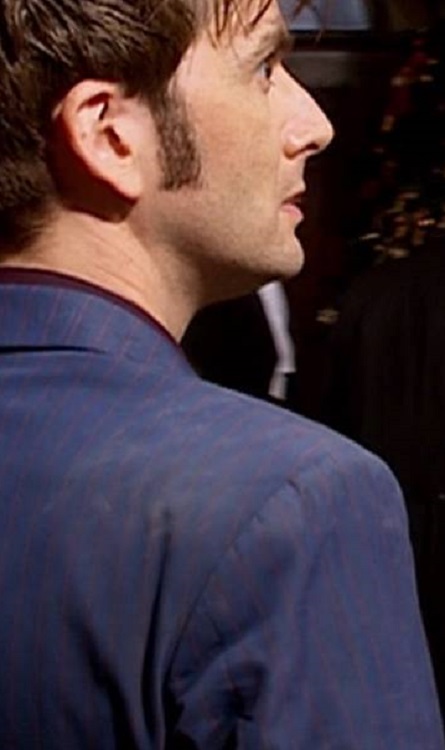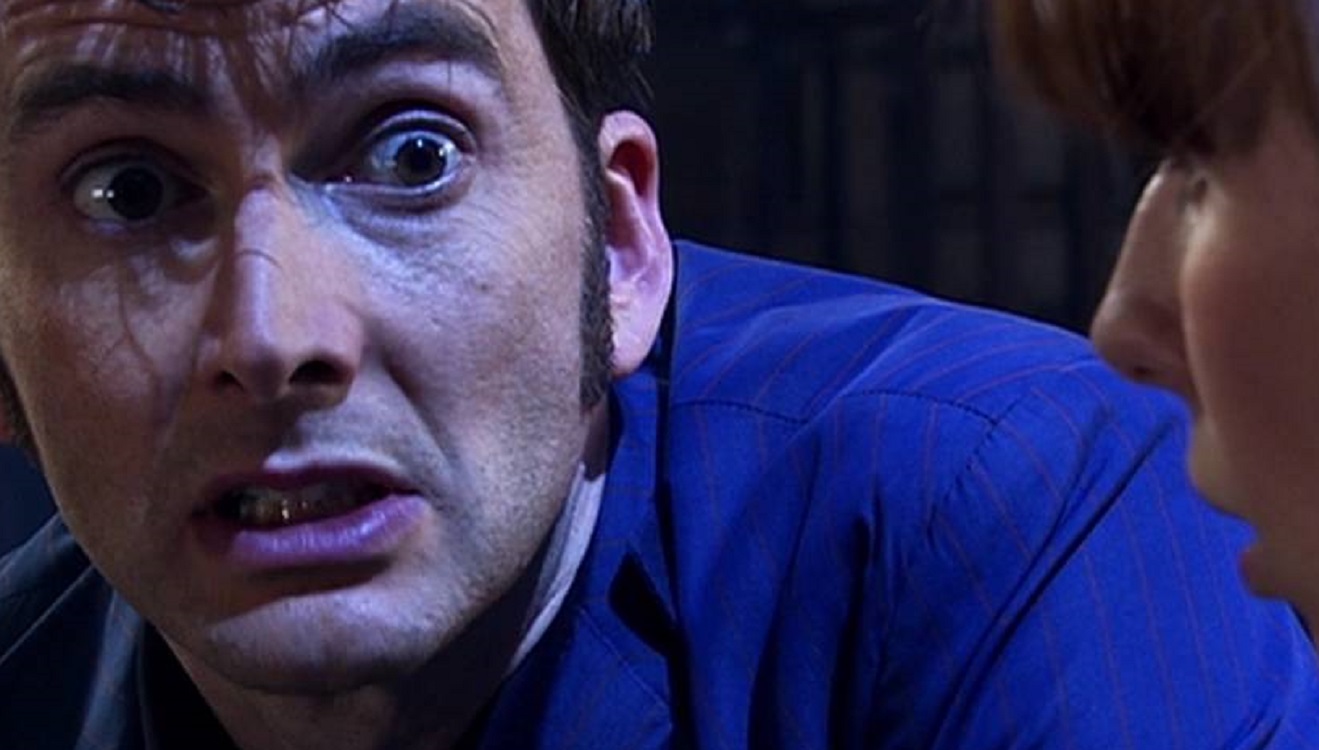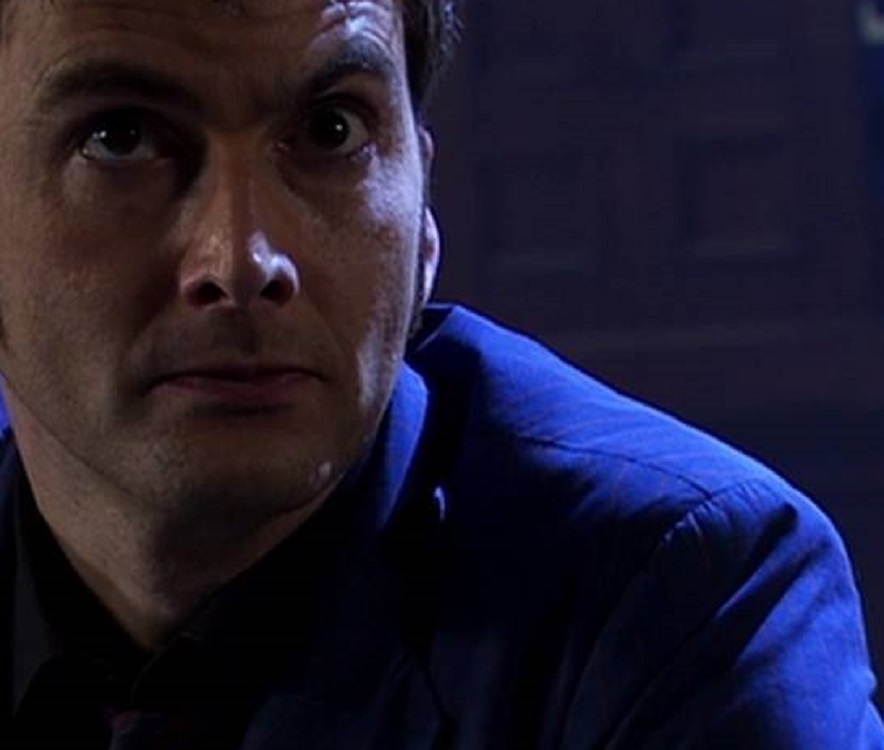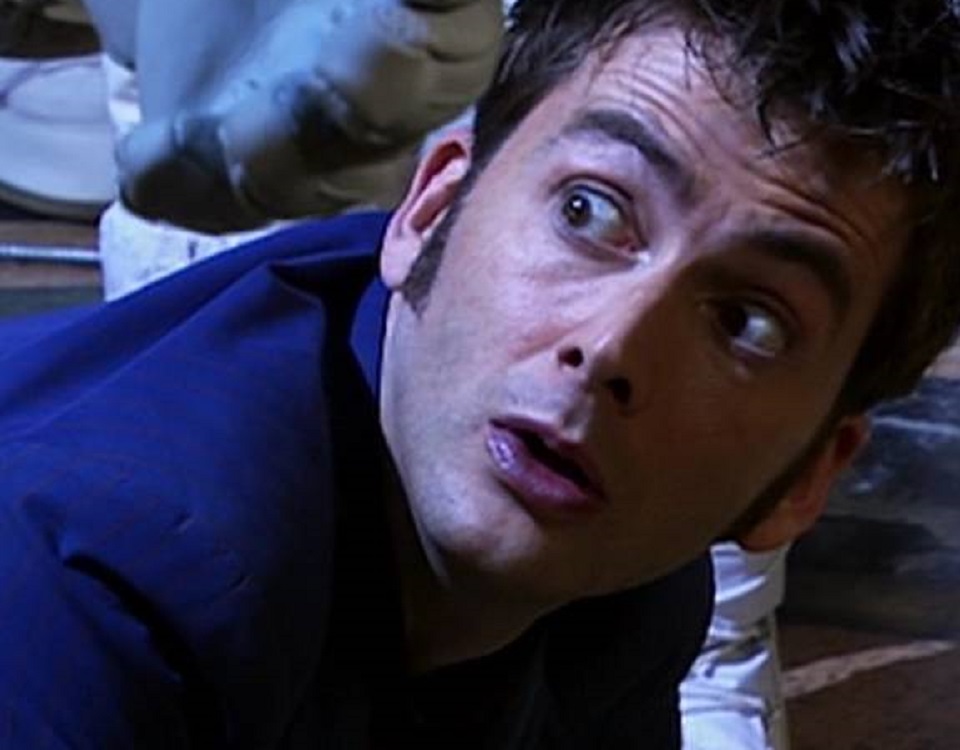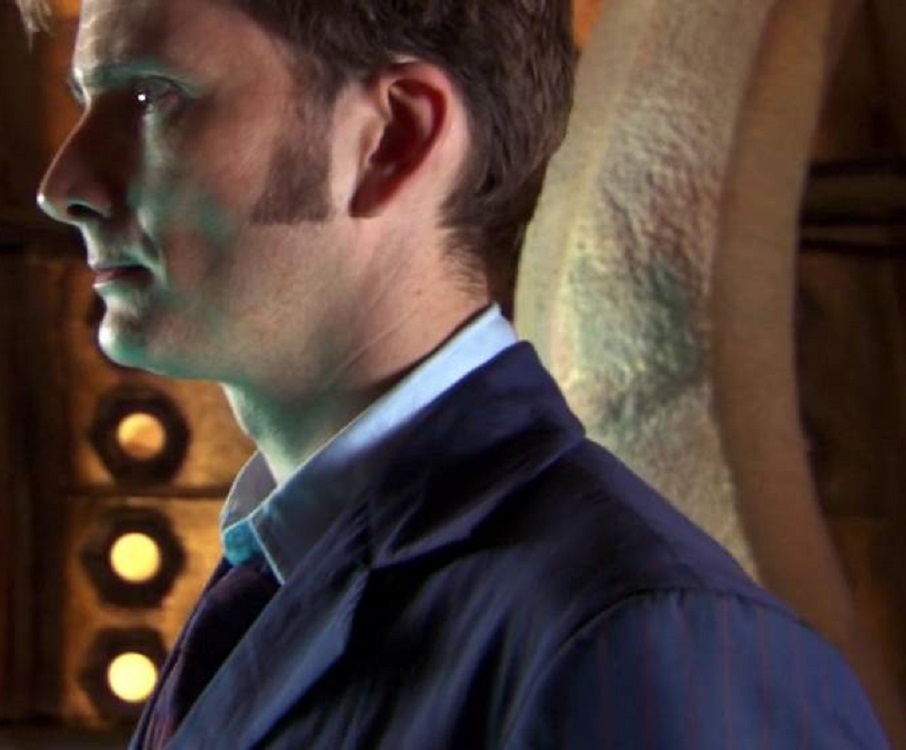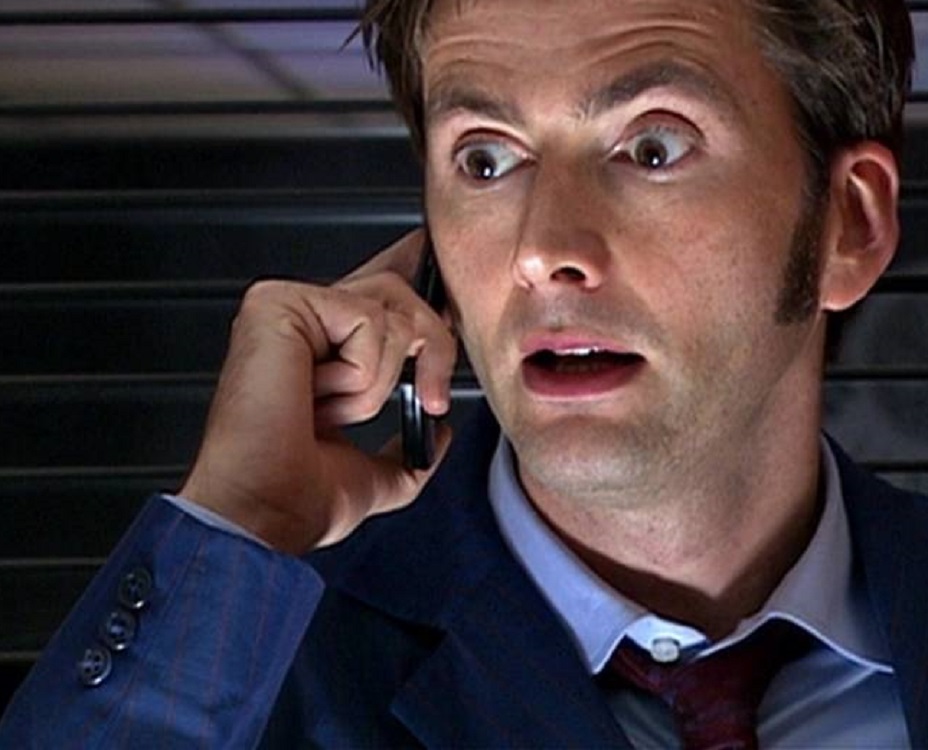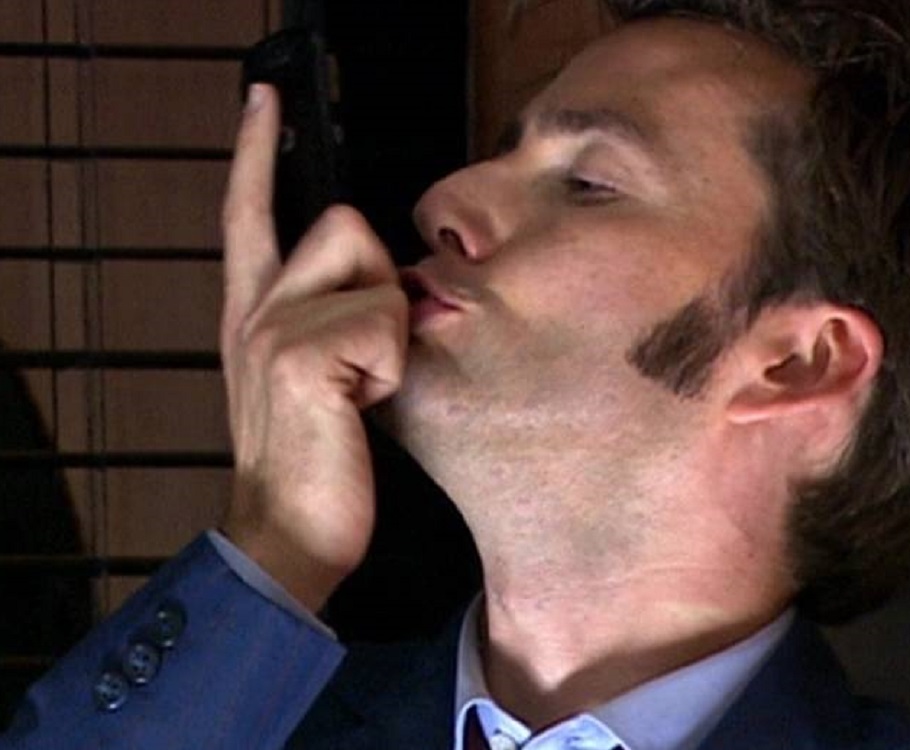Shoulder Pads and Sleeve Heads
Sleeves
Although the sleeves were cut so that they leaned slightly forward from the elbow down (as is common practice with men’s suit jackets), the actual grain of the sleeves was oriented so the pinstripes hung vertically from the armscye.
The set-in sleeve cap naturally had some ease, and the upper armscye was, ideally, perfectly smooth (or perhaps had just the faintest impression of ease).
However, the sleeve cap ease often reared its angry head during shooting (to varying degrees of severity):
As you can see, the blue suits’ sleeve caps generally fared better than the brown ones, but the extensive production use nevertheless took its toll.
The wrinkled upper armscye/sleeve cap was probably due suit jacket being made of a thin cotton shirting-weight fabric rather than wool or a material specifically intended for suiting.
The effect, while undesirable from a traditional tailoring perspective, was perhaps somewhat less objectionable from a Doctor Who perspective; Tennant’s Doctor often had more of a crumply, wrinkled look (rather than stuffy, prim, and proper). Some wrinkles here and there on his suit were arguably in keeping with his character.
That said, I doubt the wrinkled armscye was an intentional creative design/stylistic decision – probably more of a result of the strenuous production demands and numerous cleanings.
As you may recall, a similar effect could be observed on the collars and lapels (see previous page).
“Wear and tear” such as this was probably a major factor regarding the steady stream of new costumes throughout Tennant’s era: brown suits at the beginning of season two, blue suits at the beginning season three, new brown suits at the beginning of season four, new blue suits midway through season four, and then more new blue suits at the end of season four and the subsequent specials.
And naturally, the suit jacket sleeves were blind-hemmed.

